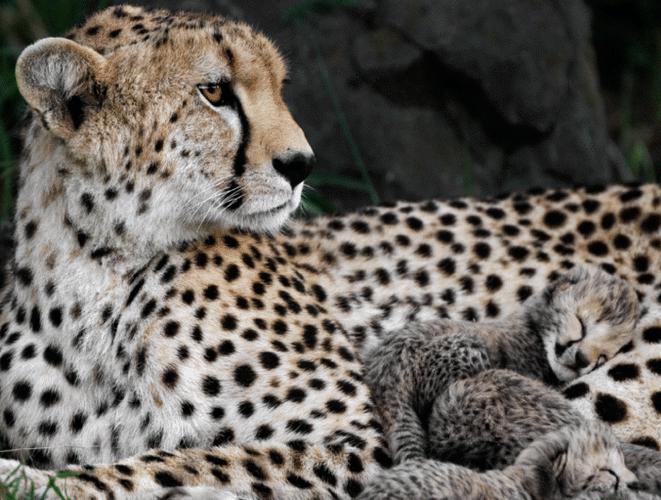Kuno Awaits Cheetah Birth in Open Forest
Cheetahs were translocated to India with a purpose. The Cheetah action plan envisages saving, conserving and developing India's grasslands .The reason for choosing cheetah was the conservation benefits. The spotted cat is a grassland-based species and the grasslands have reduced drastically in India, cheetah proponents claimed . Population of the grassland based fauna including the Indian wolf, the caracal and three endangered species of the bustard family- the Houbara, the lesser Florican, and the most endangered of all the Great Indian Bustard- has declined. In saving the cheetah , the action plan claims , other endangered species would also be saved .These arguments were also heard in the Supreme Court while the government pleaded for cheetah relocation to India.
Also read: For the First Time the Official Tale of Kuno Cheetahs
Though it is a long term plan, it would materialize only when the cheetahs become free ranging, meaning they should be free to move anywhere in the jungle without any restrictions. But if cheetahs continue to be born , brought up and remain in enclosures they would hardly have any conservation value. The one survived from Siyaya's litter and the three new born are likely to remain in enclosures all their life. They may be good for the cheetah safari planned in but not beneficial for conservation of grass land, a senior official said. So far no cheetah is born in the open forest in Kuno . “To achieve this, we need to let them roam in Kuno's open forest, settle down ,mate and breed", said a senior official of the Union ministry of environment, forest and climate change (MoEFC&C).
Kuno Cheetahs: More In Captivity Less in Jungle
After yet another spell of long captivity of almost five months four cheetahs were re-released in Kuno, first the coalition of two cheetahs named Agni and Vayu on December 17 followed by a female and a male cheetah on December 20 . Fourteen adult cheetahs- 7 males and the same number of females and the surviving cub from Siyaya- were in captivity in Kuno after the death of 3 cheetahs in the hot and humid weather conditions of Kuno in the months of July and August. They died of septicaemia. After the re- release of the four mentioned above, 10 cats are still inside in captivity .The cheetahs have been in India for almost 16 months out of which 10 months they were in captivity. There were several occasions when some of them had moved beyond the boundaries of Kuno .They were tranquilized and brought back to enclosure. This is happening because Kuno is too small a park for cheetahs (unlike the fenced African parks with an area upto 20,000 sq km or even more). On September 17, 2022, 8 cheetahs were brought from Namibia followed by 12 more from South Africa in March 2023. Six adults and three cubs have died so far for different reasons. Now Agni, one of the cheetahs re -released on December 17 had strayed away from Kuno and may be tranquilized again. Many experts have also disapproved this”repeated" human intervention of capturing cheetahs. This is hampering cheetahs' natural movement, they claimed.
Also read: Bringing African Cheetahs to India a Wrong Decision ?
Sources said that the steering committee monitoring the re-introduction of cheetahs in Kuno national park said that the cats would not be re-released “unless the prey populations are at an appropriate level”. “The cheetahs will not be released from the larger enclosure into the wild unless the prey populations are at an appropriate level of 35 animals per square km and ideally to 50 per sq km,” the 11-member committee headed by Rajesh Gopal noted after its meeting on 27 October. This was reported by The Print, prestigious news portal. The Wildlife Institute of India (WII) was also asked to carry out a fresh assessment of the prey density. Perhaps, a decision on the release of the remaining 10 cheetahs in enclosures will be taken after the prey- predator ratio improves in Kuno.
By Deshdeep Saxena




Comments
Post a Comment